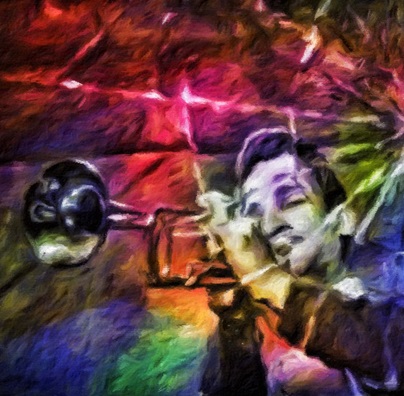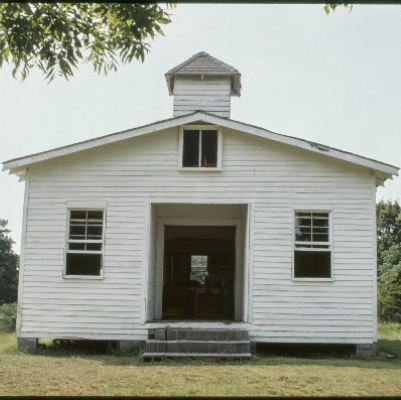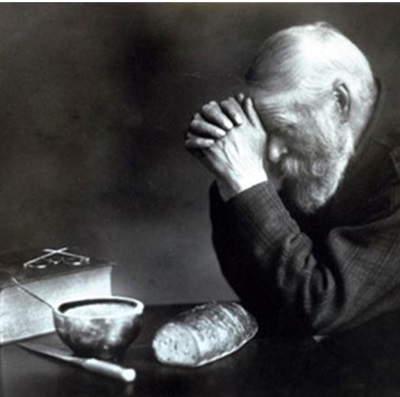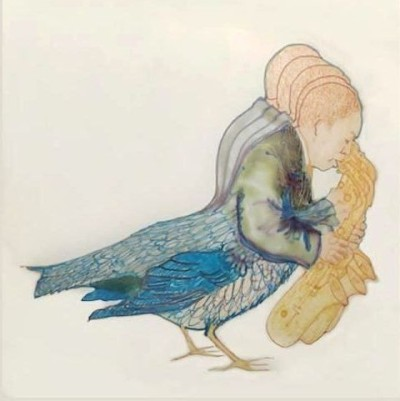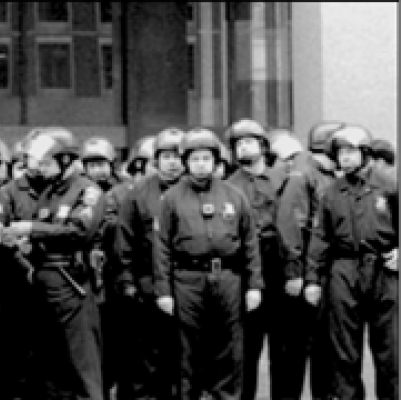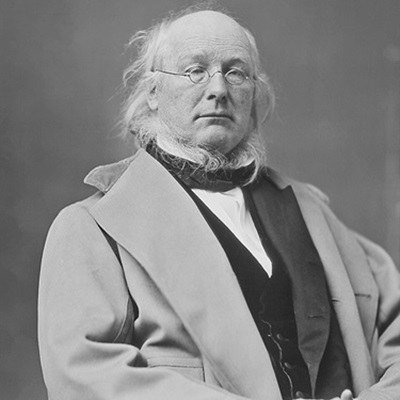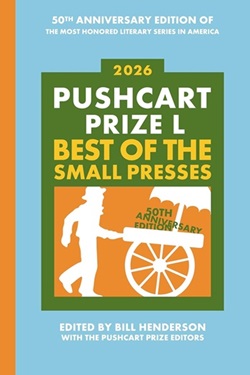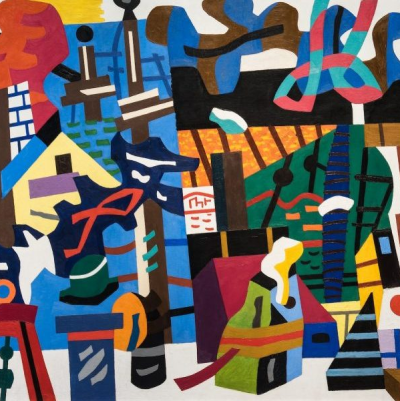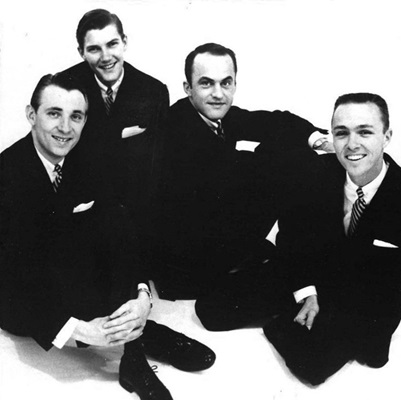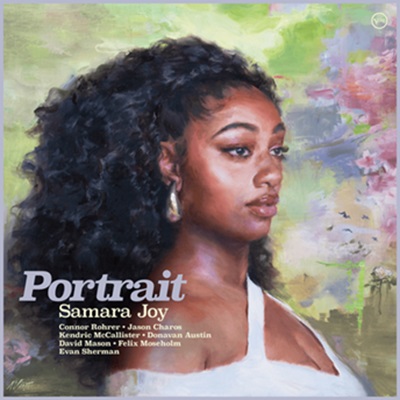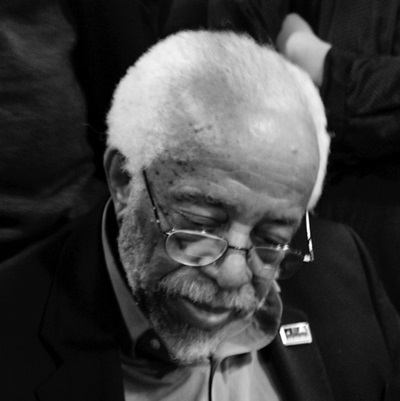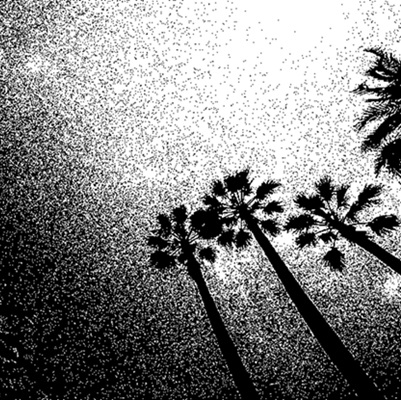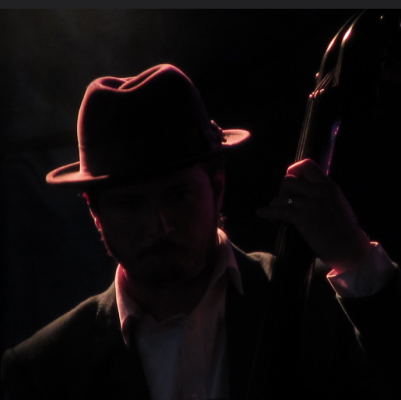An Online Story of Jazz in New Orleans
With an introduction by Nat Hentoff
__________
Featuring the complete text of chapters 1 – 5 from Hear Me Talkin’ To Ya: The Story of Jazz As Told By the Men Who Made It, a 1955 book by Nat Shapiro and Nat Hentoff
(Published with the consent of Nat Hentoff)
Chapter
Introduction
Bunk Johnson, Jim Robinson and George Lewis (holding clarinet), New
Orleans, 1946
*
Few cities in the world are as unique and culturally rich as New Orleans. When describing the city, the writer Gary Giddins called it a “movable feast,” and that people would go there to “experience its peculiarly avid, omnivorous feeling for life.”
The devastation caused by Hurricane Katrina made clear how vulnerable the city and its cultural institutions are, and created a sense of urgency within this publication to help communicate the contributions the city of New Orleans has made to the world dynamic – and no Crescent City contribution has been more potent than jazz.
How does a publication go about communicating a city’s essence, especially since those who lived its history are no longer alive to share it? One way is to have a jazz historian with the credentials of Giddins tell its story, as he did in a conversation recently published on this web site. Another way is found on this page, “An Online Story of Jazz in New Orleans,” now a component of our “New Orleans Stories.”
The core content of this feature comes from the first five chapters of Hear Me Talkin’ To Ya: The Story of Jazz As Told By the Men Who Made It, a 1955 book by journalists Nat Shapiro and Nat Hentoff. As the authors wrote in the book’s introduction, the seventy-two pages that make up this feature are “first person descriptions of the way life was enjoyed in New Orleans at the start of the century, when jazz began to come of age there.” Who better to communicate the jazz culture of New Orleans than Louis Armstrong, Jelly Roll Morton, Sidney Bechet, Bunk Johnson, and Kid Ory?
“An Online Story of Jazz in New Orleans” includes photographs of many of the narrators, as well as scenes from the community and era they describe. Every effort was made to duplicate the exact format and text of the book’s manuscript. And, as is common within Jerry Jazz Musician features, there are numerous musical and spoken word recordings to sample. It is important to note that because recordings were virtually non-existent during the years this story takes place, oftentimes the music associated with the content or photos was actually recorded years later.
It is hoped that this feature can be a permanent address for readers to turn to when seeking an understanding for the culture of New Orleans.
With the gracious consent of Mr. Hentoff – whose new introduction follows – Jerry Jazz Musician presents “An Online Story of Jazz in New Orleans.”
__________________________
Discovering New Orleans
By Nat Hentoff
_____
I had not yet been to New Orleans when Nat Shapiro and
I decided to lead off Hear Me Talkin’ To Ya: The Story of Jazz As Told
By the Men Who Made It with Danny Barker’s opening chorus. He impelled
me to go to that reverberating city, where Danny recalled:
“One of my pleasantest memories as a kid growing up in
New Orleans was how a bunch of us kids, playing, would suddenly hear sounds.
It was like a phenomenon, like the Aurora Borealis – maybe. The sounds of
men playing would be so clear, but we wouldn’t be sure where they were coming
from. So we’d start trotting, start running – “It’s this way!” “It’s that
way!” – And, sometimes, after running for a while, you’d find you’d be nowhere
near that music. But that music could come on you any time like that. The
city was full of the sounds of music…”
And being actually there, with joyous music coming out
of club after club onto the streets made me feel that if there is a Heaven,
I was already there!
Then, at Preservation Hall, as Jim Robinson’s trombone
filled me with the life force of jazz, I remembered his words at the very
end of our book: “If everyone is in a frisky spirit, the spirit gets to me
and I can make my trombone sing. If my music makes people happy, I will try
to do more. It is a challenge to me. I always want people around me. It gives
me a warm heart and that gets into my music. When I play sweet music, I try
to give my feelings to the other fellow. That’s always in my mind. Everyone
in this world should know this.”
And it came to pass that jazz became an international
language so essential to so many that when that glorious son of New Orleans,
Louis Armstrong, was scheduled to play in the Belgian Congo years later,
the two leaders in fierce civil war there decided to stop the fighting as
long as Louis was playing in the Congo so they could hear the Aurora Borealis
of his sound and spirit.
When Danny Barker came back to New Orleans after being
a major figure on the jazz scene elsewhere, he – being a natural teacher
insistent on keeping the New Orleans heritage alive – accepted the
invitation in 1970 of the Reverend Andrew Darby of the Fairview Baptist Church
(in the Seventh Ward) to form a band of kids from the neighborhood.
As Tom Jacobsen and Don Marquis write in “Danny’s Boys
Grow Up” (The Mississippi Rag, May 2006): “Danny [had] become concerned that
a generation of youngsters with an interest in music had no encouragement,
nor any outlets [then] to the city’s traditional music. The music had become
associated with an older generation of musicians…the dictates of the
local music scene when they were growing up told them, ‘If you are not old,
you are not authentic.'”
In a few years, many of Danny’s Boys “were sitting in
with the veterans and were more than holding their own.”
And Hurricane Katrina has not shut down the resilience
of that insistently living New Orleans heritage as these continuous “sounds
of surprise” (in Whitney Balliett’s definition of jazz) keep on keeping on.
In her book, Exuberance: The Passion for Life
(Knopf), Kay Redfield Jamison quotes Jack Teagarden telling of the first
time he heard Louis Armstrong on a far off river boat:
“Standing in the wind, holding a trumpet high and sending
out the most brilliant notes I had ever heard. It was jazz…it was Louis
Armstrong descending from the sky like a god.”
Imagine what this country – and the world –
would be like if history had missed New Orleans.





